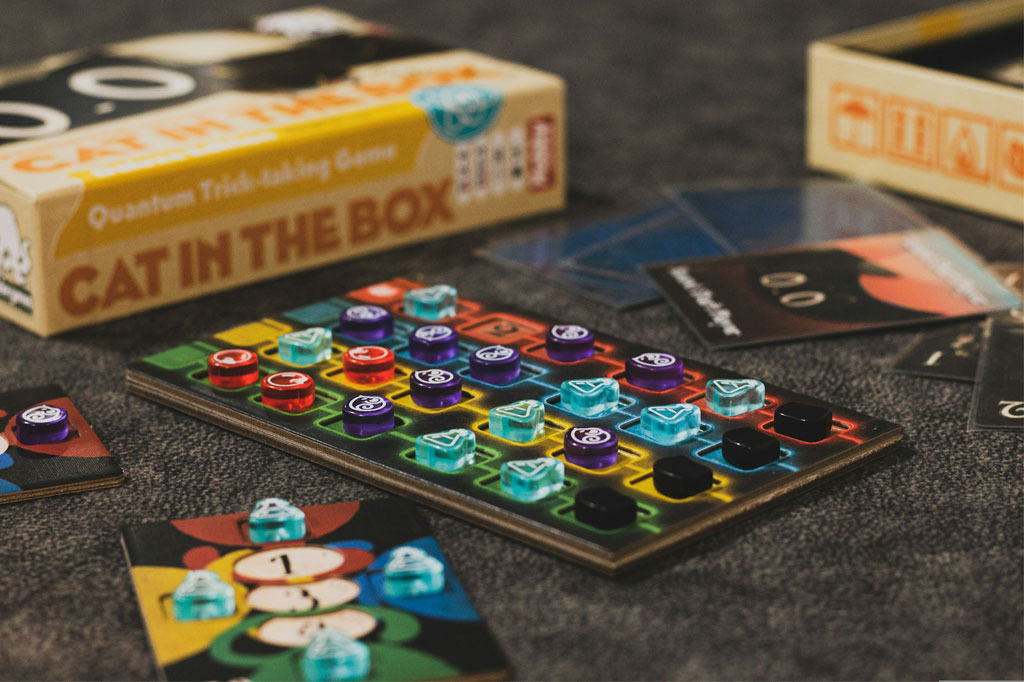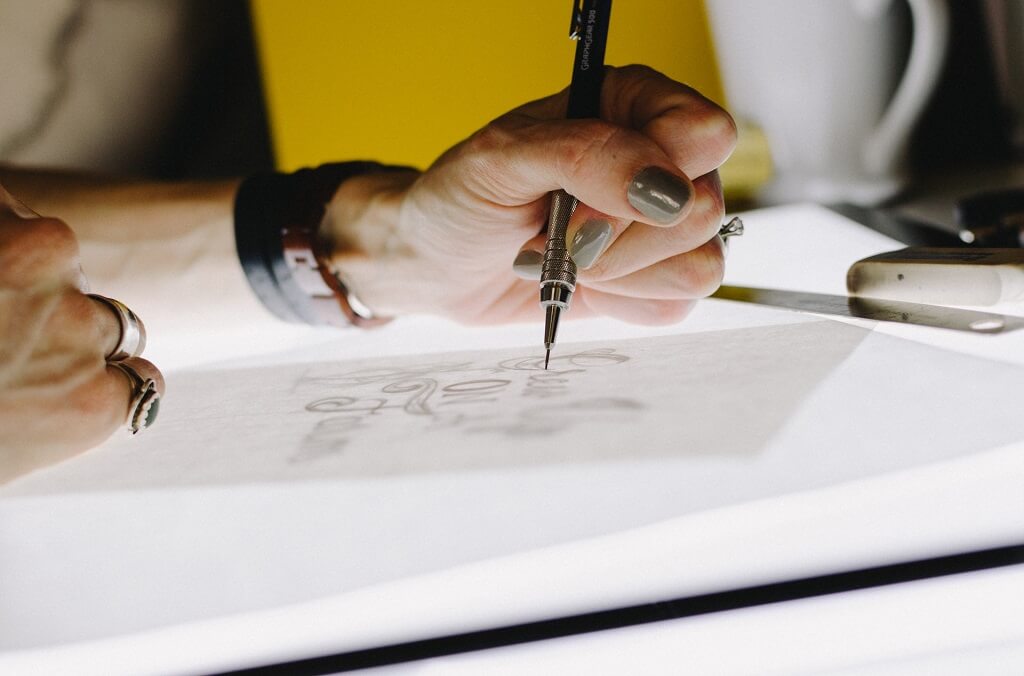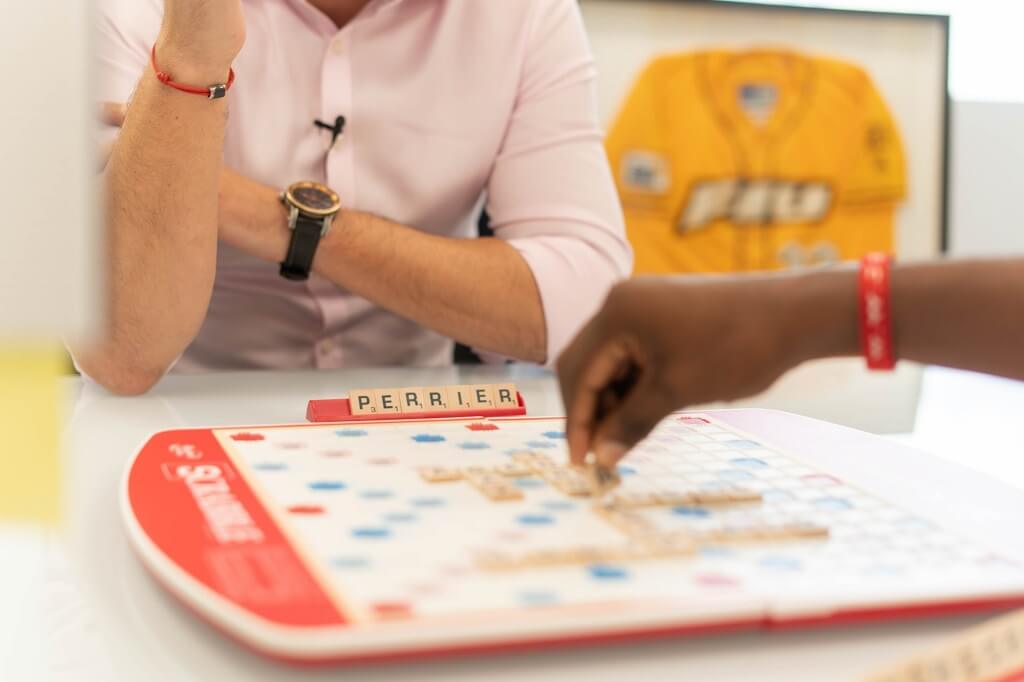When designing or manufacturing a board game, choosing the right material is just as important as crafting engaging gameplay.
The materials determine the game’s durability, cost, aesthetics, sustainability, and overall player experience.
Board games commonly rely on five major categories of materials: paper/cardboard, plastics, wood, metal, and fabrics.
Table of Contents
1. Paper & Cardstock Materials
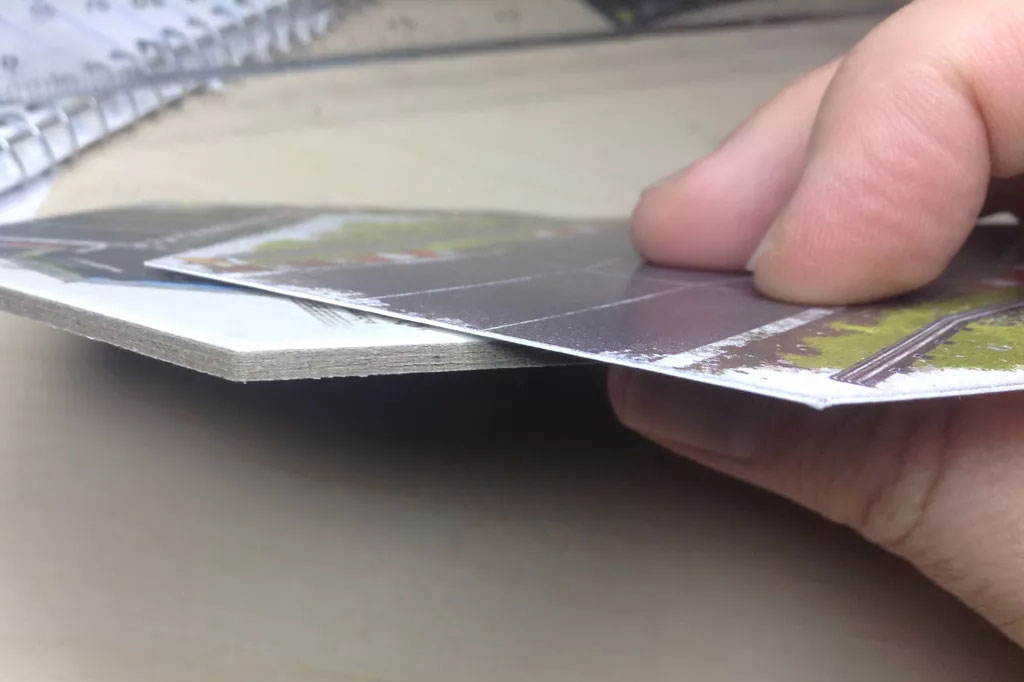
Paper and cardboard are by far the most widely used materials in board game manufacturing. They form the foundation of most board game components.
The majority of game boxes, boards, cards, punchboards, rulebooks, and player aids are made from variations of paper and cardboard.
They are affordable, lightweight, easy to print on, customizable in shape and feel, and compatible with eco-friendly manufacturing processes.
1.1 Types of Paper and Cardboard
- Greyboard: A sturdy compressed board commonly used for game boards, box bases, and lids. Thickness usually ranges from 1.0 mm to 3.0 mm.
- Art Paper: Coated paper used for laminating greyboard or printing rulebooks and cards.
- Black Core Cardstock: High-end cardstock that prevents light from shining through, used for premium playing cards.
- White Core Cardstock: Common cardstock for standard playing cards and tiles.
- Kraft Paper: Eco-friendly paper option, often used for rustic-themed games or environmentally conscious projects.
1.2 Advantages
- Highly printable: Accepts CMYK and Pantone printing beautifully.
- Cost-effective: The most affordable material for mass production.
- Lightweight: Reduces shipping costs.
- Wide range of finishes: Matte lamination, glossy lamination, linen texture, UV coating, anti-scratch film, embossing, foil stamping, and more.
1.3 Limitations
- Sensitivity to moisture, needs protective lamination to avoid warping.
- Limited durability without coatings or thicker grades.
- Less suitable for long-term or heavy wear compared to plastics or wood.
1.4 Common Applications
- Game boards
- Playing cards
- Game boxes
- Punch boards & tokens
- Booklets, rulebooks, and player aids
Paper and cardboard materials are essential in nearly all board games, forming the basis of both structural elements and visual storytelling.
2. Plastic Materials
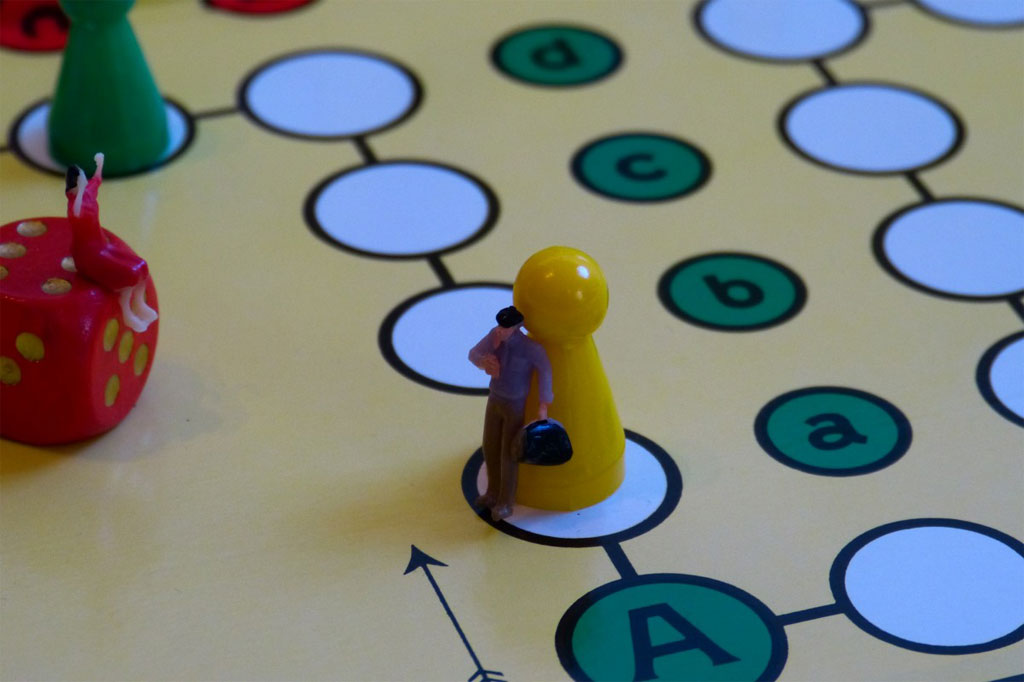
Plastic materials are used for components that require durability, complex shapes, or high detail, such as figurines, miniatures, dice, tokens, and storage trays.
They offer durability, detail, consistency, and versatility in shape and color.
2.1 Common Types of Plastics
- ABS (Acrylonitrile Butadiene Styrene): Strong, rigid, and ideal for injection-molded parts like miniatures, dice, and trays.
- PP (Polypropylene): A lightweight, flexible plastic often used in card holders or storage boxes.
- PE (Polyethylene): Used for simple tokens, chips, and low-cost components.
- PVC (Polyvinyl Chloride): Provides excellent detail and flexibility, often used for soft miniatures or figurines.
- PET (Polyester Resin): Clear plastic used for transparent components or packaging.
2.2 Advantages
- Durability: Resistant to breakage and wear.
- Complex shaping through molds: Allows production of detailed miniatures and 3D elements.
- Low cost at scale: After mold creation, per-unit costs are low.
- Color variety: Can be colored, translucent, or painted.
2.3 Limitations
- Molds can be expensive for small production runs.
- Environmental concerns, traditional plastics are non-biodegradable.
- Heavier carbon footprint compared to paper or wood.
2.4 Common Applications
- Miniatures and figurines
- Custom-shaped tokens
- Dice (plastic is the most common material)
- Insert trays for storing components
- Card holders, standee bases, and accessories
Plastics are indispensable in hobby-level board games, especially those featuring detailed miniatures or numerous small components.
3. Wooden Materials
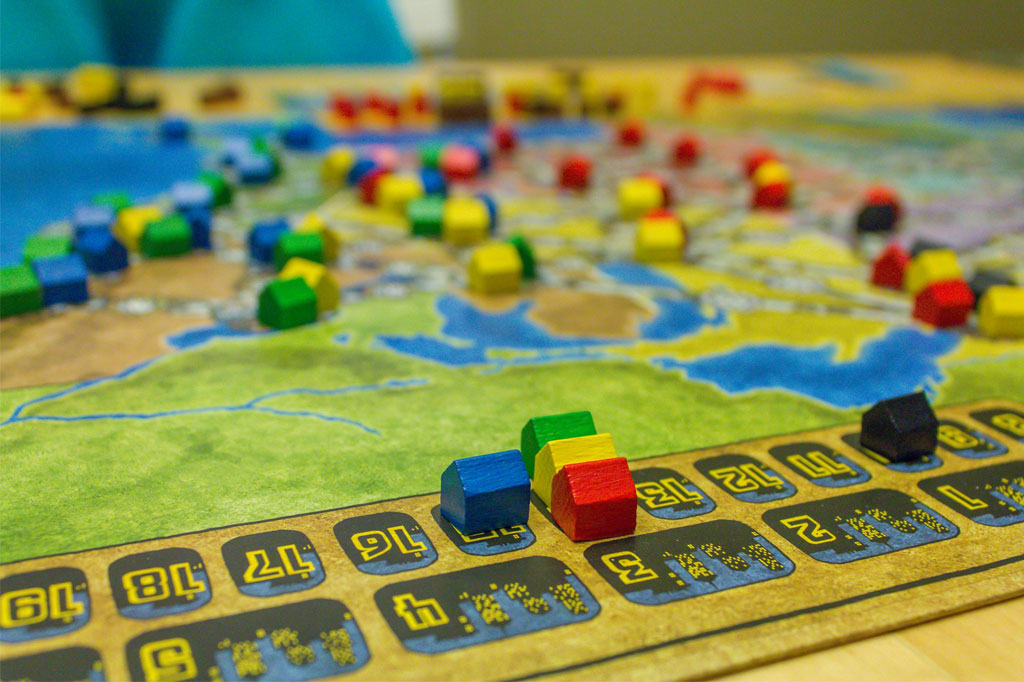
Wood has been used in board games for centuries and remains popular due to its tactile feel, longevity, and natural aesthetic. Many classic Euro-style games feature wooden components because of their sturdy structure and eco-friendly appeal.
3.1 Common Types of Wood
- Beech Wood: Smooth, durable, and suitable for precision cutting.
- Pine: Lightweight and affordable, often used for simple pieces.
- Birch: Ideal for laser-cut tokens and tiles due to its fine grain.
- MDF (Medium Density Fiberboard): Engineered wood used for some premium boards or storage boxes.
- Bamboo: Eco-friendly option growing in popularity.
3.2 Advantages
- Eco-friendly: More sustainable than plastics.
- High durability: Resistant to wear and tear.
- Premium texture and weight: Adds a high-quality feel to components.
- Easily customizable: Can be painted, stained, screen-printed, or laser-engraved.
3.3 Limitations
- More expensive than paper or plastic for certain components.
- Color variations due to natural wood grain.
- Susceptible to humidity if uncoated.
3.4 Common Applications
- Pawns, meeples, buildings, and geometric tokens
- Dice (traditional carpenter-crafted varieties)
- Resource tokens for Euro games
- Luxury components such as trays, tiles, or map markers
- High-end storage boxes
Wooden materials offer a delightful balance of sustainability, sturdiness, and timeless craftsmanship.
4. Metal Materials

Metal components are used in modern board games to add luxury, durability, or weight. They are especially common in premium editions, collectible versions, and tabletop RPG accessories.
While more expensive, metal pieces significantly enhance the tactile experience of a board game.
4.1 Types of Metal Commonly Used
- Zinc Alloy: The most common material for metal coins and miniatures. Castable and holds detail well.
- Aluminum: Lightweight and corrosion-resistant; ideal for dice or tokens.
- Steel: Strong and durable but heavier.
- Brass: Used for coins or decorative elements.
- Iron: Used for magnetic or structural applications.
4.2 Advantages
- Exceptional durability: Metals last a lifetime.
- Premium feel and weight: Adds luxury and realism.
- Highly detailed casting: Perfect for collectible items.
4.3 Limitations
- High cost, not ideal for budget games.
- Weight increases shipping cost.
- Sharp edges must be avoided.
4.4 Common Applications
- Metal coins
- Metal miniatures
- Metal dice
- Tokens and markers for premium editions
- Game box hinges, clasps, and accessories
Metal materials elevate the perceived value of a game and are often used to create memorable, collectible gameplay moments.
5. Fabric Materials

Fabric materials are used for soft, flexible, or tactile components. They add variety to board games and are often used in storage elements, draw bags, and accessories.
Fabrics can also be printed, embroidered, or blended with other materials for unique game components.
5.1 Common Fabric Types
- Cotton: Natural and breathable; great for drawstring bags.
- Polyester: Durable and printable; used for mats and flags.
- Felt: Soft and textured; used for tiles, mats, or component lining.
- Canvas: Strong fabric with a premium feel, ideal for bags or playmats.
- Neoprene: Used for high-end game mats due to its smooth surface and anti-slip backing.
5.2 Advantages
- Great for storage and protective components.
- Excellent printability on polyester and canvas.
- Lightweight, easy to fold and pack.
- Premium tactile experience when used for playmats or bags.
5.3 Limitations
- May absorb moisture if not treated.
- Less durable than metal or wood for structural components.
- Fabric edges may fray without proper stitching or heat sealing.
5.4 Common Applications
- Drawstring token bags
- Playmats (especially neoprene)
- Dice bags
- Cloth boards (foldable alternatives to cardboard)
- Component organizers and liners
Fabric-based components bring comfort and versatility to the overall board game experience.
In Summary
Paper and cardboard dominate due to their affordability and printability. Plastics deliver durability and precision for shaped components. Wooden materials provide a natural, eco-friendly aesthetic that suits many strategic games. Metals add a premium feel and collector value, while fabrics offer flexibility and comfort.

